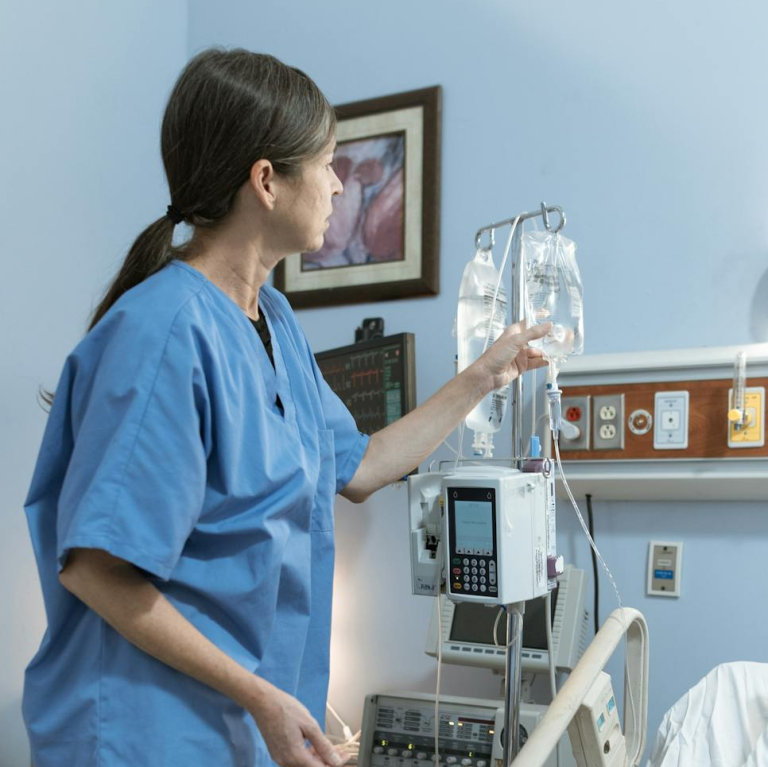Key Takeaways
- Understanding what qualifies as Durable Medical Equipment (DME) and the criteria for Medicare coverage is essential for beneficiaries.
- Navigating eligibility, medical necessity, provider and supplier requirements, and documentation ensure that beneficiaries can access the necessary equipment.
Learn About Medicare’s Durable Medical Equipment Coverage Criteria
Medicare provides essential healthcare coverage for millions of Americans, including coverage for durable medical equipment (DME). DME is crucial for individuals with chronic conditions, disabilities, or mobility issues, as it helps them manage their health and maintain their independence. This article delves into Medicare’s DME coverage criteria, including what qualifies as DME, eligibility requirements, the role of medical necessity, and the importance of working with Medicare-enrolled providers and suppliers.
What is Considered Durable Medical Equipment (DME)?
Durable medical equipment (DME) refers to medical devices and supplies that are prescribed by a healthcare provider for use in a patient’s home. These items must meet specific criteria to be classified as DME:
- Durability: The equipment must withstand repeated use over an extended period.
- Medical Purpose: It must serve a medical purpose and be used to manage a health condition.
- Home Use: The equipment should be appropriate for use in a home environment.
- Reusable: The items must be reusable and not disposable after a single use.
Examples of DME include wheelchairs, walkers, hospital beds, oxygen equipment, and blood glucose monitors. These items are essential for patients to manage their health conditions effectively and maintain independence in their daily lives.
Eligibility Requirements for Medicare DME Coverage
To be eligible for Medicare coverage of DME, beneficiaries must meet certain criteria. These requirements ensure that the equipment is necessary and appropriate for the patient’s medical condition.
Enrollment in Medicare Part B
The patient must be enrolled in Medicare Part B, which covers outpatient medical services, including DME.
Medical Necessity
A healthcare provider must certify that the DME is medically necessary. This means that the equipment is required to treat or manage a medical condition and is not simply for convenience.
Prescription from a Medicare-Enrolled Provider
The DME must be prescribed by a doctor or healthcare provider who is enrolled in Medicare. The prescription should include the type of equipment, the medical condition it is intended to address, and the duration of use.
Use in the Home
The equipment must be intended for use in the patient’s home. This includes a private residence, nursing home (as long as it is not a skilled nursing facility), or assisted living facility.
The Importance of Medical Necessity
Medical necessity is a crucial criterion for Medicare coverage of DME. This concept ensures that the equipment provided is essential for the patient’s health and not for personal convenience.
Determining Medical Necessity
Medical necessity is determined by a healthcare provider who assesses the patient’s condition and prescribes the appropriate equipment. The provider must document why the DME is required and how it will benefit the patient’s health.
Documentation Requirements
Proper documentation is essential to establish medical necessity. This includes:
- Doctor’s Prescription: A detailed prescription specifying the type of DME, the medical condition it addresses, and the duration of use.
- Medical Records: Supporting medical records that provide evidence of the patient’s condition and need for the equipment.
- Certificates and Forms: Additional forms, such as a Certificate of Medical Necessity (CMN) or a Detailed Written Order (DWO), may be required by Medicare to substantiate the need for DME.
Role of Medicare-Enrolled Providers in DME Coverage
Working with Medicare-enrolled providers is essential for obtaining DME coverage. These providers understand Medicare’s requirements and can ensure that the necessary documentation is completed accurately.
Choosing the Right Provider
When selecting a provider, consider the following:
- Medicare Enrollment: Ensure that the provider is enrolled in Medicare and authorized to prescribe DME.
- Experience: Choose a provider with experience in managing and documenting medical necessity for DME.
- Communication: Effective communication between the patient, provider, and supplier is essential for a smooth process.
Provider Responsibilities
Medicare-enrolled providers play a key role in the DME coverage process:
- Assessment: Conduct a thorough assessment of the patient’s condition and determine the appropriate DME.
- Documentation: Complete and submit all required documentation to support the medical necessity of the equipment.
- Coordination: Coordinate with the DME supplier to ensure the timely delivery and setup of the equipment.
Approved Suppliers for Medicare DME
Obtaining DME from an approved supplier is crucial for ensuring Medicare coverage. Approved suppliers meet Medicare’s standards and agree to accept Medicare’s payment terms.
Finding an Approved Supplier
Use the Medicare Supplier Directory available on the Medicare website to locate approved suppliers in your area. When selecting a supplier, consider the following:
- Medicare Enrollment: Verify that the supplier is enrolled in Medicare and accepts Medicare assignment.
- Product Availability: Ensure the supplier has the prescribed equipment in stock.
- Customer Service: Evaluate the supplier’s reputation for customer service and support.
Supplier Responsibilities
Approved suppliers have specific responsibilities to ensure Medicare compliance:
- Verification: Verify the patient’s Medicare coverage and the provider’s prescription.
- Cost Estimates: Provide clear cost estimates, including any potential out-of-pocket expenses.
- Delivery and Setup: Arrange for the delivery and setup of the equipment in the patient’s home, including training on how to use the equipment safely and effectively.
Documentation and Prescription Requirements
Proper documentation and accurate prescriptions are vital for Medicare coverage of DME. This ensures that the equipment is medically necessary and meets Medicare’s criteria.
Prescription Details
A detailed prescription from a Medicare-enrolled provider should include:
- Type of Equipment: Specific details about the DME required.
- Medical Condition: The condition that necessitates the use of the equipment.
- Duration of Use: The expected duration for which the equipment will be needed.
Supporting Documentation
In addition to the prescription, other supporting documents may be required:
- Certificate of Medical Necessity (CMN): A form that certifies the medical necessity of the equipment.
- Detailed Written Order (DWO): A more detailed order that provides additional information about the patient’s condition and the need for DME.
- Medical Records: Comprehensive medical records that support the provider’s assessment and prescription.
Steps to Ensure Your DME is Covered by Medicare
Following these steps can help ensure that your DME is covered by Medicare and that you receive the necessary equipment without unnecessary delays or expenses.
Step 1: Consultation with a Healthcare Provider
Consult with a Medicare-enrolled healthcare provider who can assess your condition and determine the appropriate DME. Ensure that the provider understands Medicare’s requirements and can provide the necessary documentation.
Step 2: Obtain a Detailed Prescription
Ensure that the provider writes a detailed prescription that includes all necessary information about the equipment, medical condition, and duration of use.
Step 3: Choose an Approved Supplier
Select a Medicare-approved supplier who can provide the required equipment and accepts Medicare assignment. Use the Medicare Supplier Directory to find a reliable supplier in your area.
Step 4: Submit Documentation
Work with your provider and supplier to ensure that all required documentation is submitted to Medicare. This includes the prescription, CMN, DWO, and any supporting medical records.
Step 5: Confirm Coverage
Verify with Medicare and the supplier that the equipment is covered and that there are no outstanding requirements. Ensure you understand any potential out-of-pocket costs.
Step 6: Arrange for Delivery and Setup
Coordinate with the supplier to arrange for the delivery and setup of the equipment in your home. Ensure you receive proper training on how to use the equipment safely and effectively.
Conclusion
Understanding Medicare’s criteria for durable medical equipment coverage is essential for beneficiaries who rely on these critical devices to manage their health. By knowing what qualifies as DME, the eligibility requirements, the importance of medical necessity, and the roles of Medicare-enrolled providers and suppliers, beneficiaries can navigate the process more effectively. Proper documentation and following the necessary steps can ensure that you receive the DME you need with minimal hassle and expense.
Contact Information:
Email: [email protected]
Phone: 9495555678











